Incredible wartime experience of Fife airman told in new book
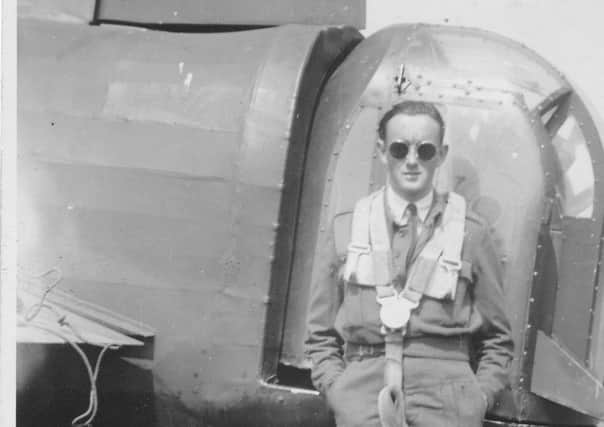

Albert Gunn (93) has vividly recounted the trials and tribulations he faced while battling hunger and fighting to maintain hope and his sanity in a prisoner-of-war camp in the Last of the Kriegies.
The Church of Scotland elder, who serves at Kinghorn Parish Church, was just 18-years old when he joined the Royal Air Force as a gunner and took part in many daring bombing missions over Germany.
Advertisement
Hide AdAdvertisement
Hide AdIn the book, Mr Gunn, one of the UK’s last surviving Bomber Command POWs, describes the intensity and extreme danger he and his comrades faced in their operational duties.
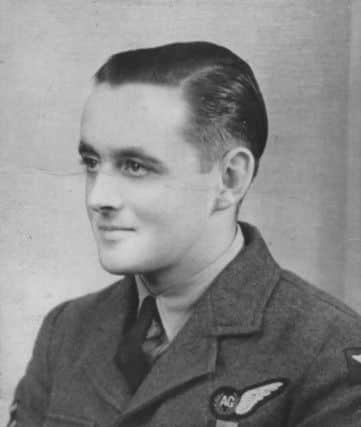

He reveals the circumstances in which his Handley Page Halifax heavy bomber suffered catastrophic engine failure during a raid on Berlin in December, 1943, forcing the crew to bail out.
Mr Gunn parachuted into hostile territory and like thousands of stricken airmen, was seized as a ‘Kriegsgefangener’ – prisoner-of-war, nicknamed ‘kriegie’ for short.
His story is one of five recounted by British airmen in the book which lays bare the frustration, baiting and harassing of prison guards as well as friendships made in the face of horror.
Advertisement
Hide AdAdvertisement
Hide AdMr Gunn’s daughter, Rev Gillian Paterson of Wellesley Parish Church in Methil, says she is immensely proud of her father, who weighed less than seven stones when he was released.


“This is a long-held dream that has been realised in seeing my Dad’s story published,” she said.
“From when I was a small girl, I have heard the stories of his time in the RAF which he loved, and also the trials of the prison camp.
“I am humbled by his bravery and the courage of the countless others who served in World War II and since. But I am also inspired by the way my Dad has lived his life following his release from the prison camp.”
Advertisement
Hide AdAdvertisement
Hide AdAround 125,000 airmen served with Bomber Command squadrons during WW2 and almost 60 per cent were casualties; 55,573 airmen lost their lives and 9838 became prisoners-of-war.
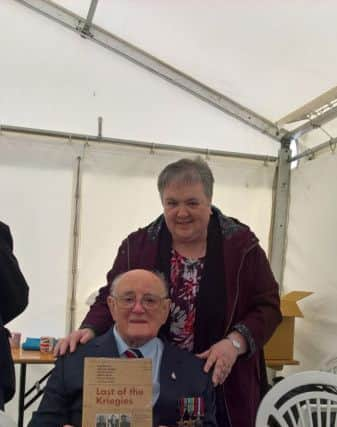

Mr Gunn was captured and taken to a POW camp near Muhlberg, 35 miles from Leipzig.
He and the other prisoners – Allied soldiers and airmen – were liberated by American and Russian troops in April 1945. He eventually returned home to Burntisland and left the RAF in February, 1947.
Over the course of his working life, which only ended at the age of 85, he worked in the Naval yard in Donibristle, ran a family-owned convenience shop in Burntisland and was an archivist for an architects firm.
Advertisement
Hide AdAdvertisement
Hide AdMrs Paterson said: “Dad’s faith helped him greatly while he was in captivity and has been at the forefront of all he has done in his personal and working life.
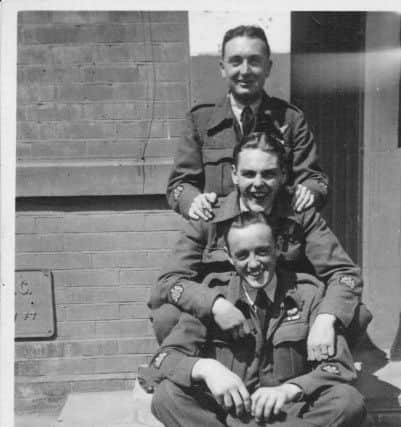

“Despite what happened to him, he has nothing against the Germans. He is a very pragmatic man who has never blamed the guards at the camp or others for what they went through. I admire that hugely.”
Recounting the beginning of his terrifying ordeal, Mr Gunn, who originally wanted to be pilot, wrote: “We had the benefit of an evening take-off just before dark and everything went smoothly.
“With full loading, it took some time for the Halifax to reach altitude, usually about 18,000 feet, and every effort was made to get to 15,000 feet before the enemy coast as light anti-aircraft guns could reach you at that height.
Advertisement
Hide AdAdvertisement
Hide Ad“We had no problems until nearing the German border with Holland; an aircraft quite close to us was attacked by a fighter and returned fire.
“Not long after this incident the engineer reported we were losing power in our starboard outer engine, and this became sufficiently serious to close the engine down and feather the propeller to avoid drag.
“As we were in a stream consisting of over 700 aircraft, we decided to carry on, using three engines and in fact were able to maintain altitude until we started to lose power on the starboard inner.
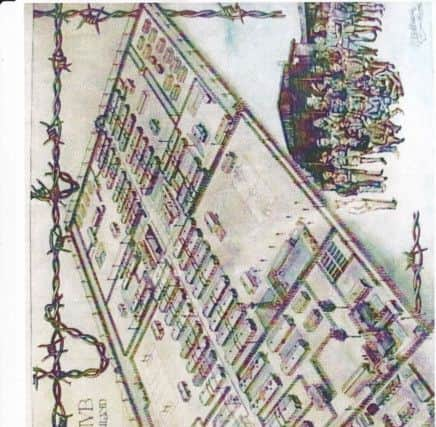

“With this obviously serious situation we started to lose height and decided we had no choice but to turn back.”
Advertisement
Hide AdAdvertisement
Hide AdMr Gunn, the only Scot whose story is outlined in the book, said the plane was already well into German airspace but despite jettisoning its bomb load, it could barely maintain altitude.
“The port inner engine then developed the same symptoms as the others and, as our height dropped, we realised we were in serious trouble,” he wrote.
“Pilot Andy Baird was having great difficulty in controlling the aircraft, with only one good engine, and it was decided we had to abandon it.
“I slipped on the chute and to my horror the pack landed on the floor, having pulled the straps, which in theory do not come undone until after the parachute opens.
Advertisement
Hide AdAdvertisement
Hide Ad“I folded them as best I could, holding the lot to my chest, and then had to negotiate the main spar and climb down under the cockpit instrument panel into the nose.
“I was faced with a very draughty black hole in the floor and without hesitation sat down, made sure I had the parachute handle in one hand and, holding the pack as tightly as I could, thrust myself out.
“It only seemed seconds after my parachute opened that I heard the aircraft seemingly coming back towards me, but in actual fact it was going in a dive toward the ground, which it hit with a tremendous explosion.”
Mr Gunn said he landed with a thump at the edge of a field.
“I quickly gathered my parachute and harness together, and as I tried to hide it as best I could in some bushes and shrubs.
Advertisement
Hide AdAdvertisement
Hide Ad“The rain was persistent and I looked for somewhere to shelter for the night, but any place I approached seemed to be well protected by barking dogs.”
The former session clerk of Burntisland Parish Church, said he had walked for several hours when he realised that someone was following him.
“When I stopped walking, they stopped, and we continued in this way until I could see that I was approaching a T-junction and would have to go right or left,” he wrote.
“On my left, just short of the junction was a large tree, so I quickly moved behind it to see what my pursuer might do.
Advertisement
Hide AdAdvertisement
Hide Ad“I knew immediately that something was wrong, and a torch was suddenly shone in my face and a large rifle thrust against my chest.”
The soldier was German and the woman who was following him appeared with a group of armed men.
“One, with a Luger pistol, had no doubts as to what should be done with me, but fortunately the local police chief was also present and we proceeded towards the village,” he added.